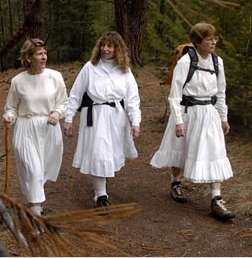Martin Brennan at Anubis Caves
A new video clip shows him discussing the mysterious carvings that appear to be synched to the equinoctial sunset shadows at "Anubis Caves," a site in the Oklahoma Panhandle. You can view them at filmmaker Scott Monahan's site or at the Mythical Ireland site.
The case for a Celtic connection was made by Barry Fell, Gloria Farley, and the late Bill McGlone, particulary in his book Ancient American Inscriptions: Plow Marks or History?
I have discussed this issue before. It truly baffles me. McGlone makes a plausible argument for the transatlantic origin of these symbols and writings, except . . . .
Why here? Why in far western Oklahoma and southeastern Colorado? There were no great trading cities here 2,000 years ago and no gold nuggets lying on the ground. According to conventional archaeology, there were only a few people here, living the simplest hunter-gatherer lives. They were probably similar to the people encountered by the Coronado expedition in the 1540s living along the rivers (little rivers, mostly) of the High Plains and hunting buffalo when they could.
It's a hell of a long way to go for a Druidic vision quest.
Nevertheless, the other more contemporary puzzle is why these alleged Celtic inscriptions are so ignored by contemporary Colorado Pagans, most of whom have never heard of them. If you had Stonehenge only four hours' drive from metro Denver, wouldn't you go there now and then?
UPDATE: While I concentrated on the alleged Celtic presence in the Southern Plains, I should point out that other students of the inscriptions claim a Punic (Phoenician or Libyan) presence also. It is hard to discuss all this without getting into the politics of diffusionism and the turf battles between Old World and New World archaeologists, all beyond the scope of this blog.
Labels: archaeology, Celts, Colorado
 Ladies in White, three women in Missoula, Montana,
Ladies in White, three women in Missoula, Montana, 

